Custards, creams, and brulées are things that don't instantly come to mind when you think "dairy-free," but that's the reason to make them! This dairy-free panna cotta is based on coconut milk, so no dairy is involved. I do use gelatin, so this is not a vegan recipe, but could easily be adapted to use agar or another gelatin substitute that is vegan-friendly.
As always, I do include a few affiliate links in this post for products I truly use and love. This just means that if you make a purchase after clicking one of those links, I'll earn a little money (at no cost to you) to keep the kitchen up and running, which I promise to use to create more fun content like this! One of those affiliates is with Amazon, which requires a very clear disclosure: as an Amazon Associate, I earn from qualifying purchases. If you have any questions about affiliates, please reach out!
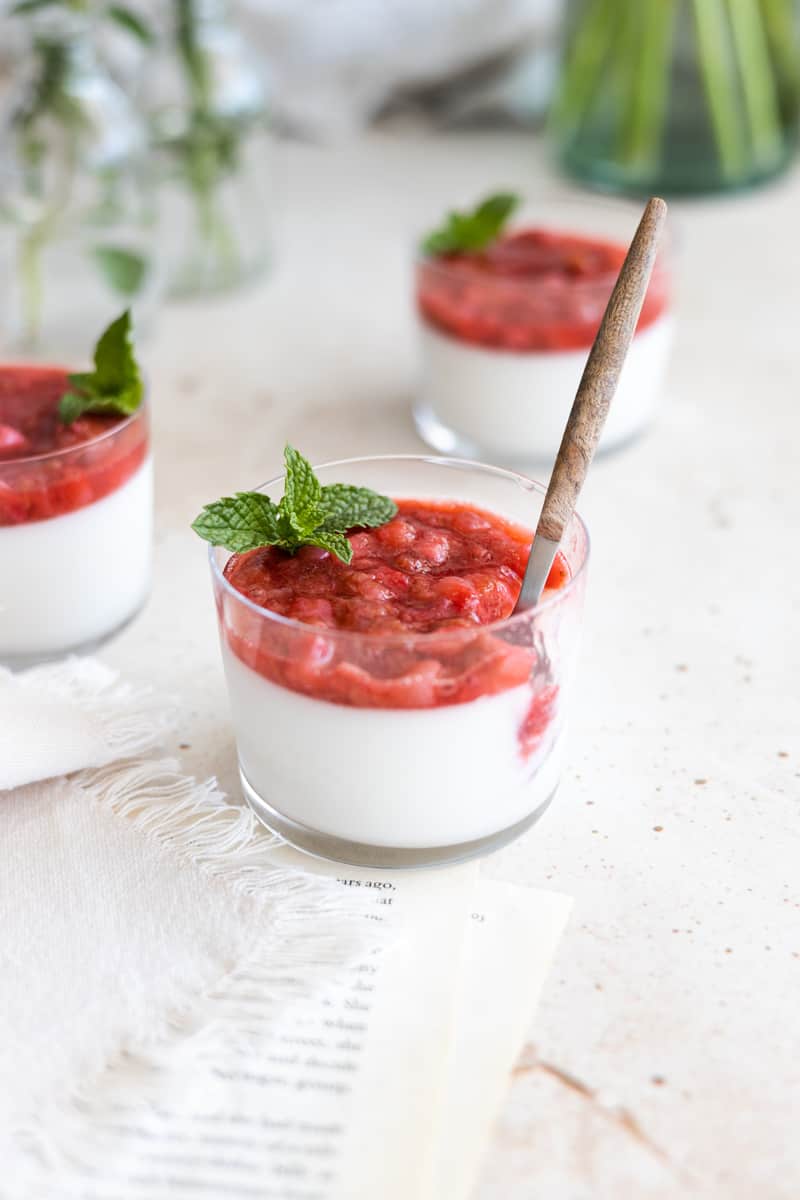
A fun fact about panna cotta: the amount of fat in the milk or the recipe as a whole determines the consistency. Less fat means the panna cotta will be softer (or looser, if that makes sense). A very sturdy panna cotta, especially if you're using molds, has high fat content. Since I like to make my panna cotta a bit lighter, I recommend using cups or ramekins rather than molds.
The strawberry rhubarb compote makes this a wonderful summer recipe that would go well with Simple Summer Frosé as a cocktail or served after a delicious dinner of Pasta with Burst Cherry Tomatoes. Also, if you're looking for other dairy-free custard-like desserts, check out my Dairy-Free Chocolate Mousse: it's a favorite at our house!
Ingredients
Panna cotta is very simple and you want it to be so. The biggest factor is your choice of milk, and your choice of fat content, which will really determine the overall flavor and texture of your dessert.
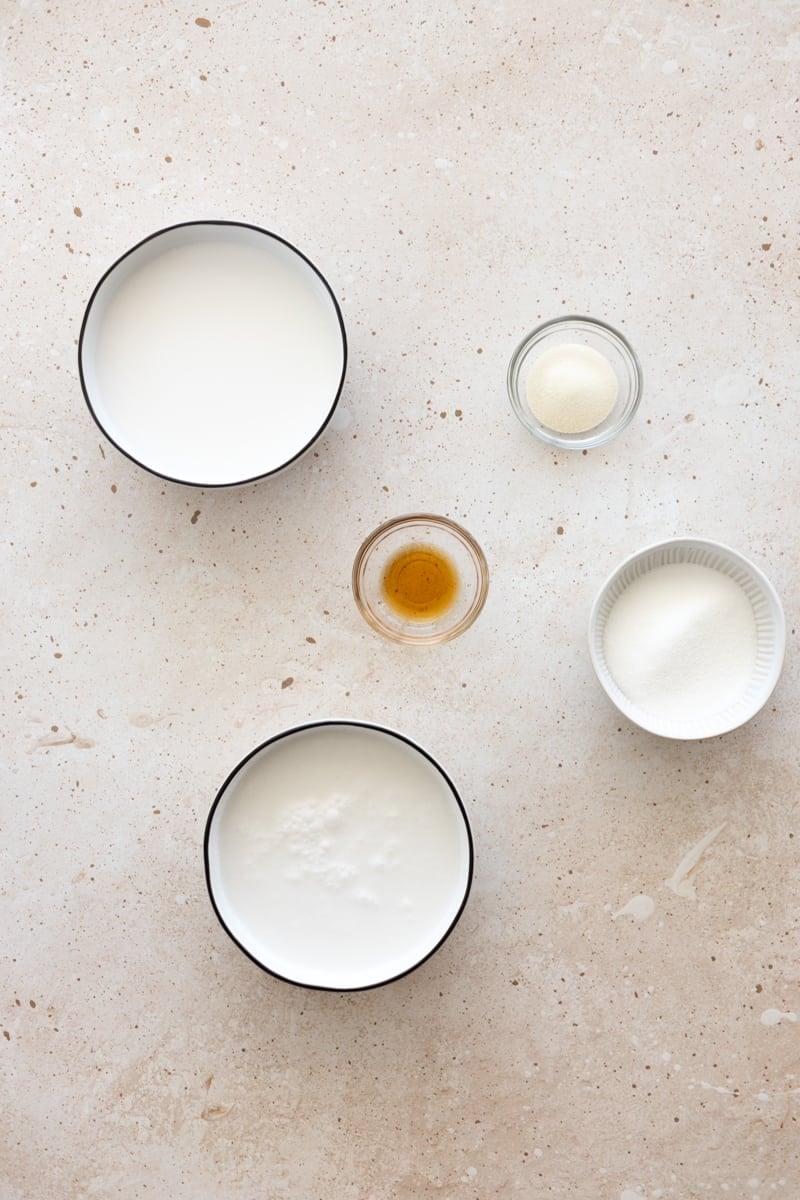
- Coconut milk: I tend to try to lighten recipes where possible, and in this case, I typically use 1 can (13.5 oz.) of full-fat coconut milk, and one can (13.5 oz.) of light coconut milk. You can absolutely use two cans of full-fat, or two cans of light, or a different milk altogether. To note: you may have a little separation if you use two milks with different fat content. Using two cans of the same fat-content milk will lead to a smoother dessert, but overall, the flavor will not be impacted, even if there is a little separation.
- Powdered gelatin: I use powder, but you can also use gelatin sheets, or if you prefer, a vegan-friendly option such as agar. The gelatin is what will make your panna cotta set up and have that texture that we all love.
- Granulated sugar: this is to add some sweetness to the panna cotta.
- Vanilla extract: just a little bit! You can also make your own vanilla extract for all of your baking needs.
- Fresh strawberries: fresh is best, but frozen would work here as well. Dice the strawberries fairly small. A little texture to the compote is a good thing, but you want to be able to get a spoonful that has panna cotta as well as a little rhubarb and a little strawberry all in one bite, so you don't want to leave the berries too big!
- Fresh rhubarb: fresh is best, but frozen would work here as well. Slice the rhubarb into ½-inch pieces.
See the full recipe and directions below.
Instructions
Panna cotta is very easy to make, but there are a few things you want to be careful of.
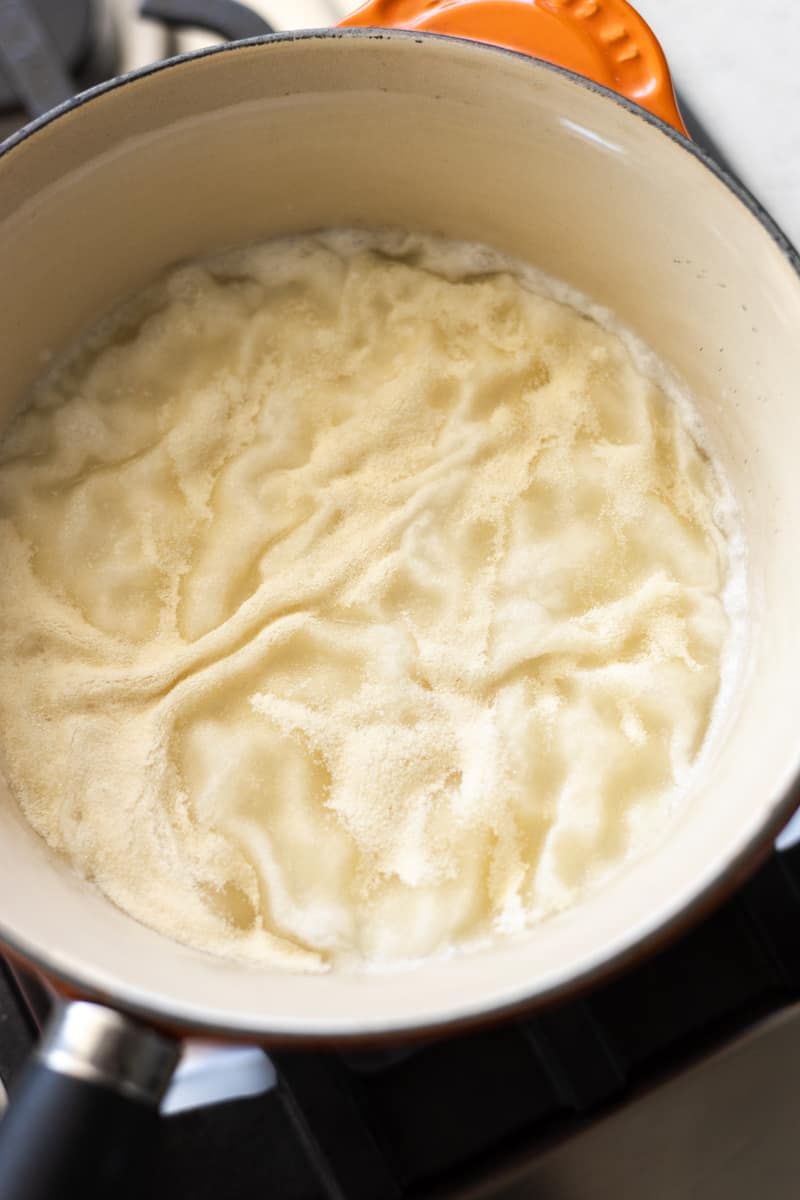
Pour the coconut milk into a small saucepan and sprinkle with the gelatin. Let sit until it looks wrinkled.
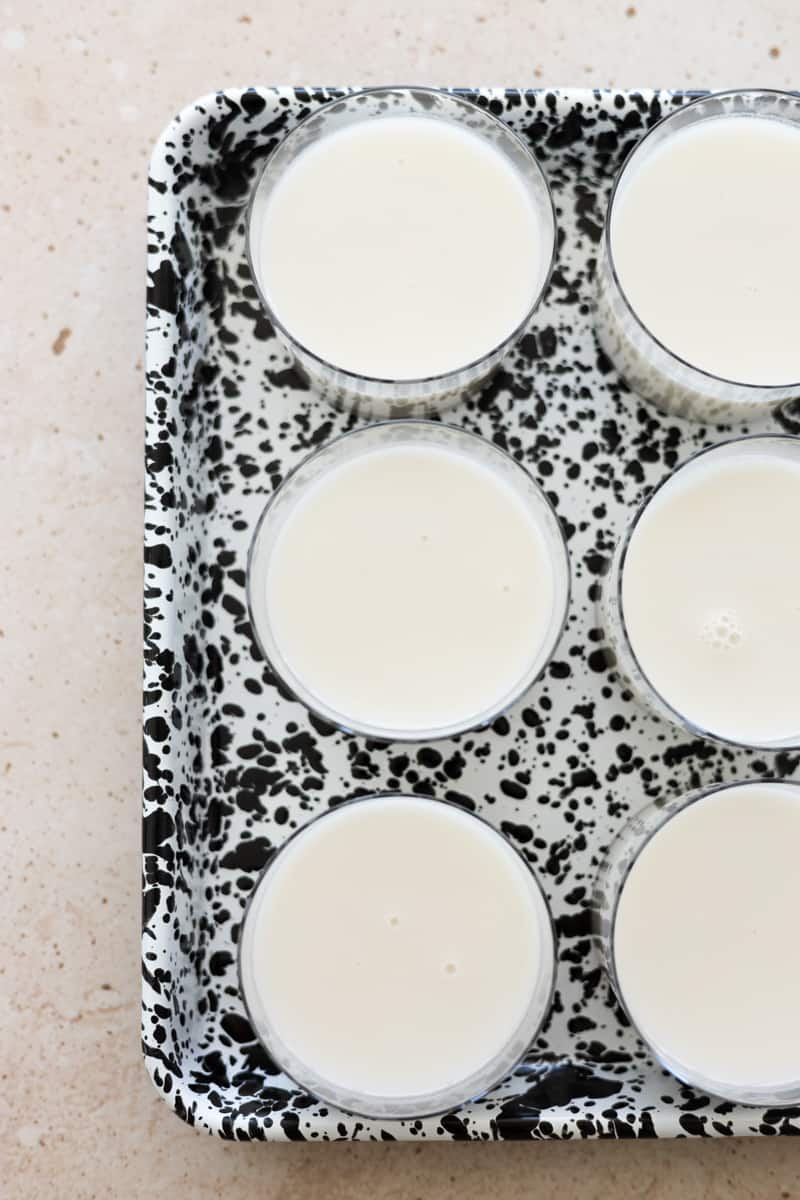
Add the sugar and stir to make sure the sugar and gelatin are dissolved. Do not boil the liquid. Transfer to small ramekins or cups.
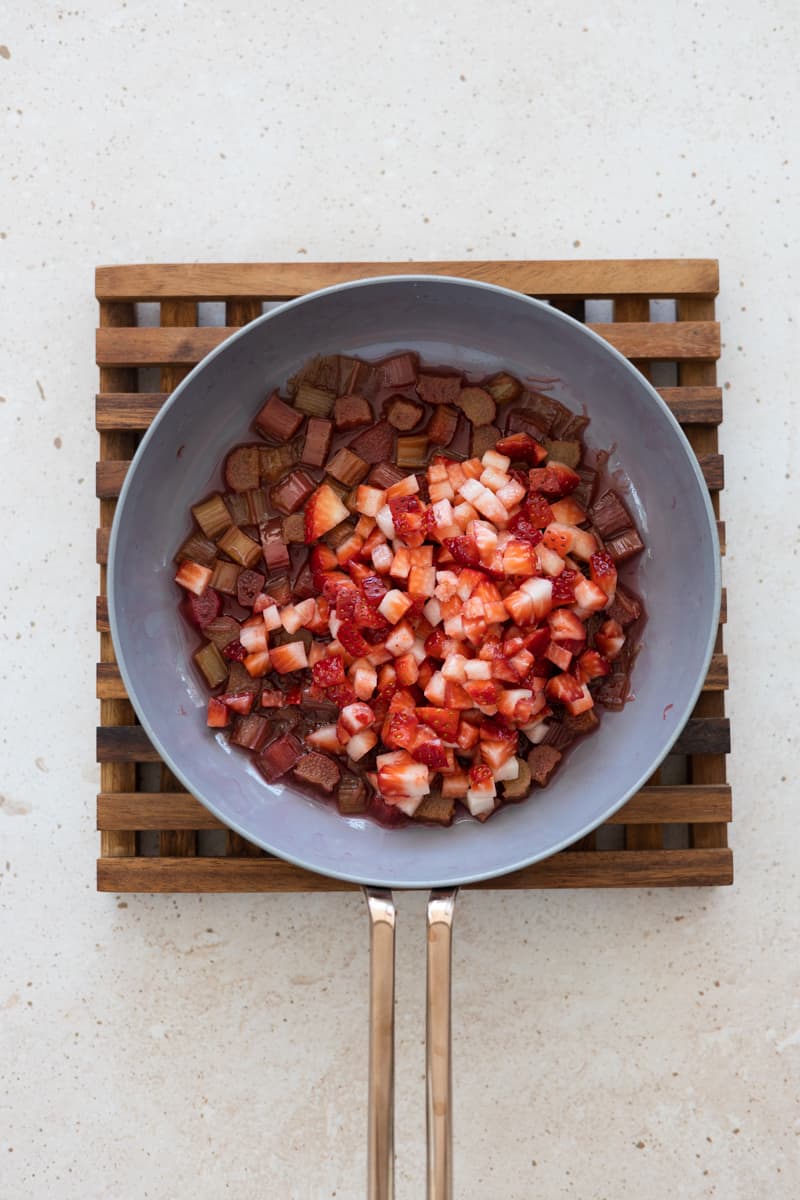
Combine your fruits, sugar and water in a small skillet to create the compote.
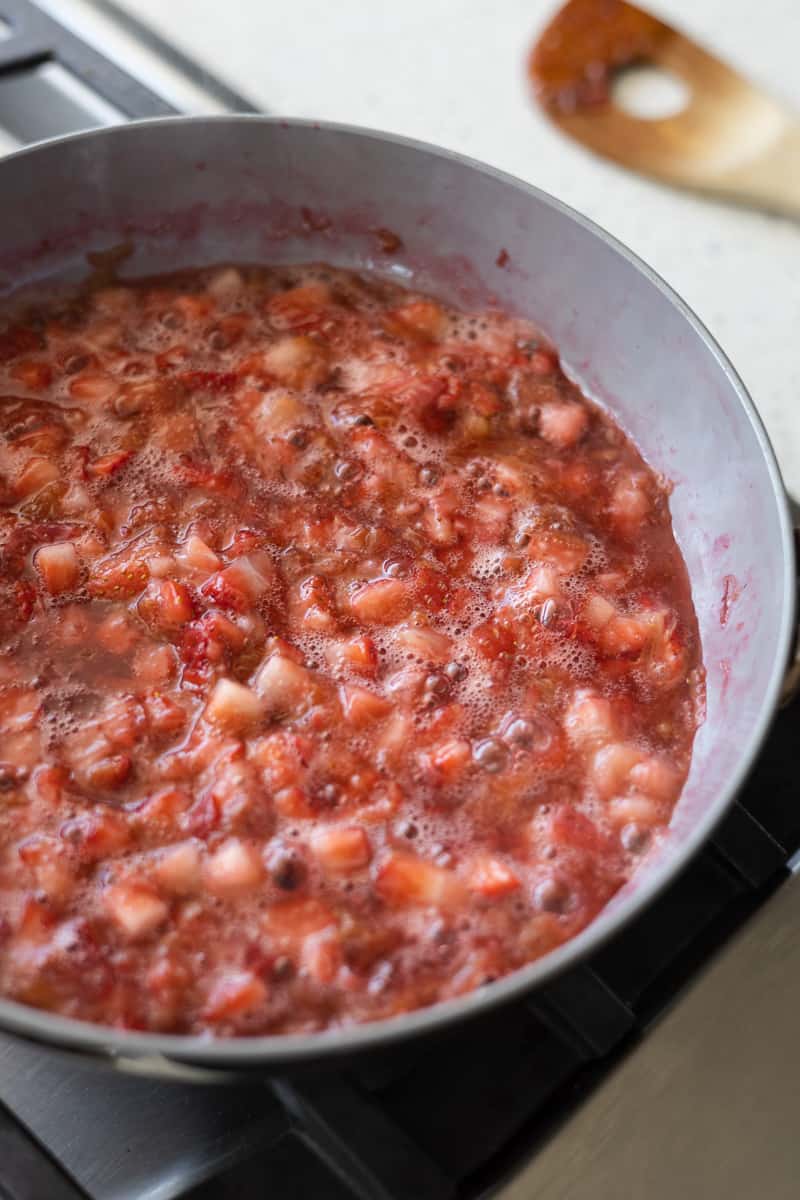
Let simmer a few minutes, then cool. Once your panna cottas are firmed and your compote is cool, you can assemble your dessert.
Making sure that the milk does not boil is key. The gelatin and the sugar will dissolve quickly. Heating the mixture speeds that up a bit, but it does not need to be hot to do so. If you see the milk starting to steam, remove the pan from the heat and keep stirring.
Hint: Even though the sugar and gelatin will dissolve, you may still have some small lumps (especially if you're using powdered gelatin). Before you transfer the panna cotta to the cups, strain it to remove any of those last little lumps.
Substitutions
With this recipe, the milk choice is key. There are lots of options here, but below are a few recommendations based on what I have tried.
- Full-fat coconut milk - use two cans of full-fat coconut milk, which will help with any separation that you might see when using one can of full-fat, and one can of light. I do not recommend using coconut cream.
- Almond milk - I have made this recipe using almond milk, and it's very tasty, but it's very soft. Remember that less fat means the panna cotta will be softer and not as firm when it sets up.
- A dairy option - if you're not looking for a non-dairy option, you can always make this recipe using half and half or heavy cream.
Molds vs. cups
I like to use cups or ramekins because I like the way they look, and they're easy to serve. If you want to use molds where you create a shape with the panna cotta, and serve on a plate, you need to be even more mindful of the fat content of your recipe. If you're using something with very low fat, it will generate a very soft panna cotta, and it will not hold a shape well.
I do not recommend using molds with this recipe. For me, it seems like more work and not worth the effort. Stick with the cups! I like to use these low Bodega Glasses from Crate & Barrel for a clean, minimal, modern presentation.
Equipment
Very little is needed to make panna cotta. You'll need a small saucepan to heat the milk mixture (I like to use the Le Creuset Enameled Sauce Pan) and a strainer to strain the panna cotta before pouring it into cups. For the cups, you can use individual-sized ramekins (something like these) or I like to use the low Bodega Glasses from Crate & Barrel for a clean, minimal, modern presentation.
Storage
Store the panna cotta in cups with a plastic wrap covering. Store the fruit compote in a separate airtight container. When they're stored separately, these will stay fresh for up to 5 days. If they've been mixed (the fruit compote is on top of the panna cotta), it's best to eat them within 24 hours as the fruit juices will start bleeding into the custard.
Top tip
Keep it simple and stick with using cups or ramekins rather than molds! Since this is a dairy-free recipe, the milk options often result in a lower fat content than using regular dairy half and half or heavy cream, so you'll have a softer panna cotta that is less likely to hold the shape of a mold.
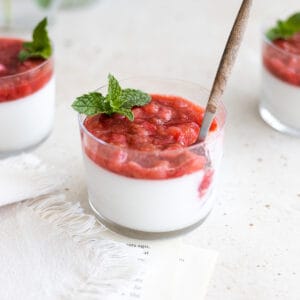
Dairy-Free Panna Cotta with Stawberry Rhubarb Compote
Ingredients
- 2 cans (13.5 oz.) coconut milk see notes on fat content
- 3 teaspoons powdered gelatin
- ⅓ cup granulated sugar
- 1 teaspoon vanilla extract
- pinch kosher salt
- 1 cup fresh strawberries hulled and coarsely chopped
- 1 cup fresh rhubarb cut into ½ inch pieces
- 1 Tablespoon granulated sugar
- 1 Tablespoon water
Instructions
Make the Panna Cotta
- Pour the coconut milk into a small saucepan and sprinkle with gelatin. Let sit for 5 minutes, or until the surface of the milk looks wrinkled and the gelatin is slightly dissolved.
- Place the saucepan over low heat to warm the coconut milk gently, whisking frequently. The milk should never boil or simmer; if you start to see steam, remove the pan from the heat and continue stirring. The gelatin will dissolve quickly as it warms; this will likely only take 2-3 minutes.
- Stir the sugar into the warm milk mixture and whisk until dissovled, about 1-2 minutes.
- Remove the saucepan from the heat; whisk in vanilla extract and a pinch of salt. Pour the mixture into small ramekins, cups or bowls, cover with plastic wrap and chill in the refrigerator 1-2 hours until firmed.
Make the strawberry Rhubarb Compote
- Combine the rhubarb, sugar and water in a small skillet or saucepan over medium heat, stirring until the sugar dissolves. Reduce heat to medium-low, cover and simmer until rhubarb is tender, 2-3 minutes.
- Add strawberries and simmer uncovered, stirring occassionally, until strawberries are tender, 2-3 minutes. Transfer to a bowl and chill for at least 30 minutes.
- To assemble, top the chilled panna cotta with the strawberry rhubarb compote and garnish with a mint sprig.

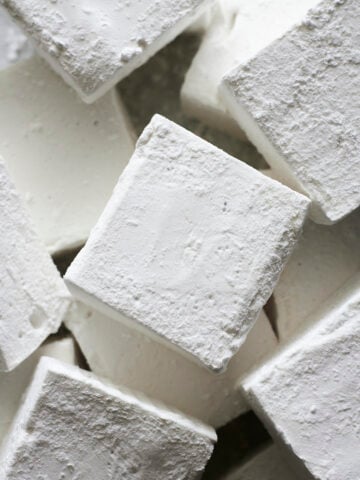
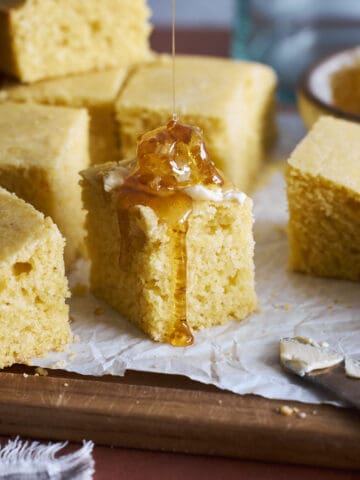
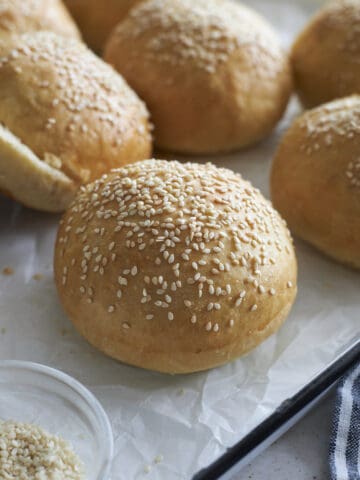
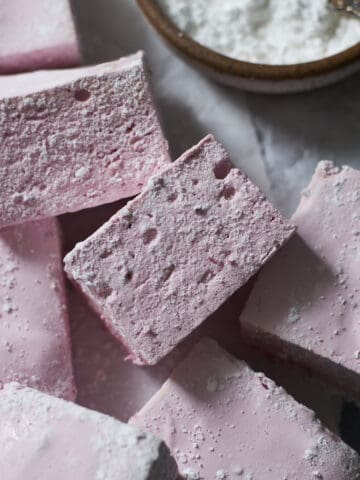
Leave a Reply